JBL Authentics 500 review: big, bold sound to match big, bold looks
Big, bold sound to match its big, bold looks: the JBL Authentics is a 70s-styled speaker with low-frequency attitude

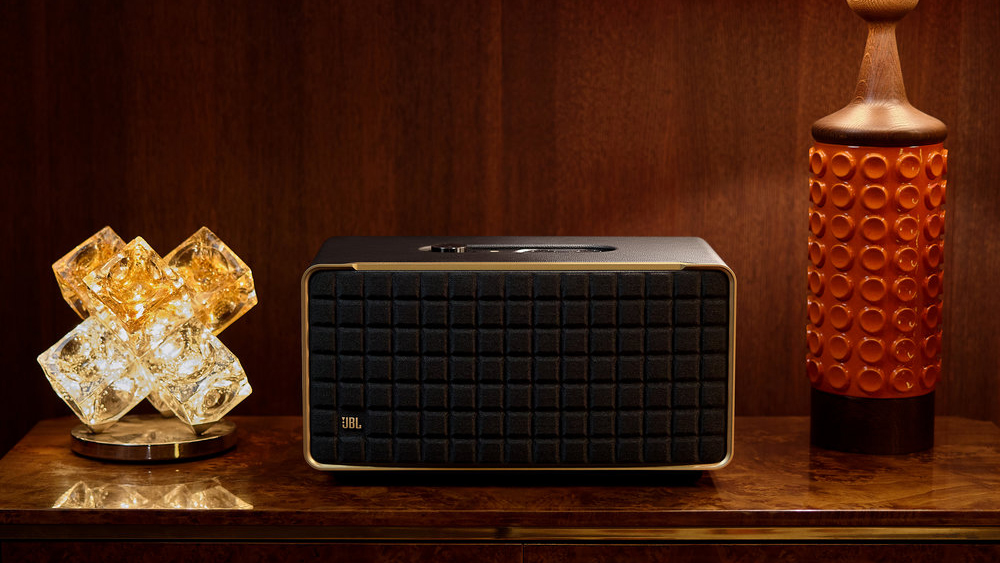
With big, bold sound to match its big, bold looks, the JBL Authentics 500 is a powerhouse of a wireless speaker that’s sure to win plenty of admirers. Mostly those who crave low-frequency action and aren’t all that fussed about the Dolby Atmos side of its specification.
-
+
Large-scale, organised, detailed and informative sound
-
+
Compatible with both Amazon Alexa and Google Assistant
-
+
Likeable looks if you like this sort of thing
-
-
Very specific sonic attitude won’t suit everyone, because...
-
-
...the word ‘wallop’ isn’t automatically a good thing
-
-
Dolby Atmos sound is a strictly qualified success
Why you can trust T3

Ah, the 1970s. Decimalisation, the three-day week, flared trousers flapping up a storm… and the halcyon days of ‘proper’ hi-fi. JBL, of course, was a big part of what made the 70s such a hi-fi high point - and so the company has lately decided to bring some of its old-school potency to bear on a line-up of thoroughly modern products.
Its Authentics range of wireless speakers is just one case in point. They’re specified to compete in the here and now, but designed to look like they stepped out of Studio 54. We all know though, don’t we, that looking the part is only a part of it? And not even the biggest part…
JBL Authentics 500: Price & Availability
The JBL Authentics 500 is on sale now, and in the United Kingdom it’s nominally priced at £559. That translates to €629 in the Euro-zone, $699 in JBL’s native United States, and AU$999 in Australia.
As I’ll explain, this money buys quite a lot of stuff if you put it JBL’s way - but the Authentics 500 is by no means your only wireless speaker choice if you’ve this sort of money to spend. The Sonos Era 300, for example, is a little more affordable, while the current Bowers & Wilkins Zeppelin is a little more expensive. Both are diverting and proven options, though, which means the JBL has more to do than just show up looking like a retro-revivalist’s dream…
JBL Authentics 500 review: Features & What's New?
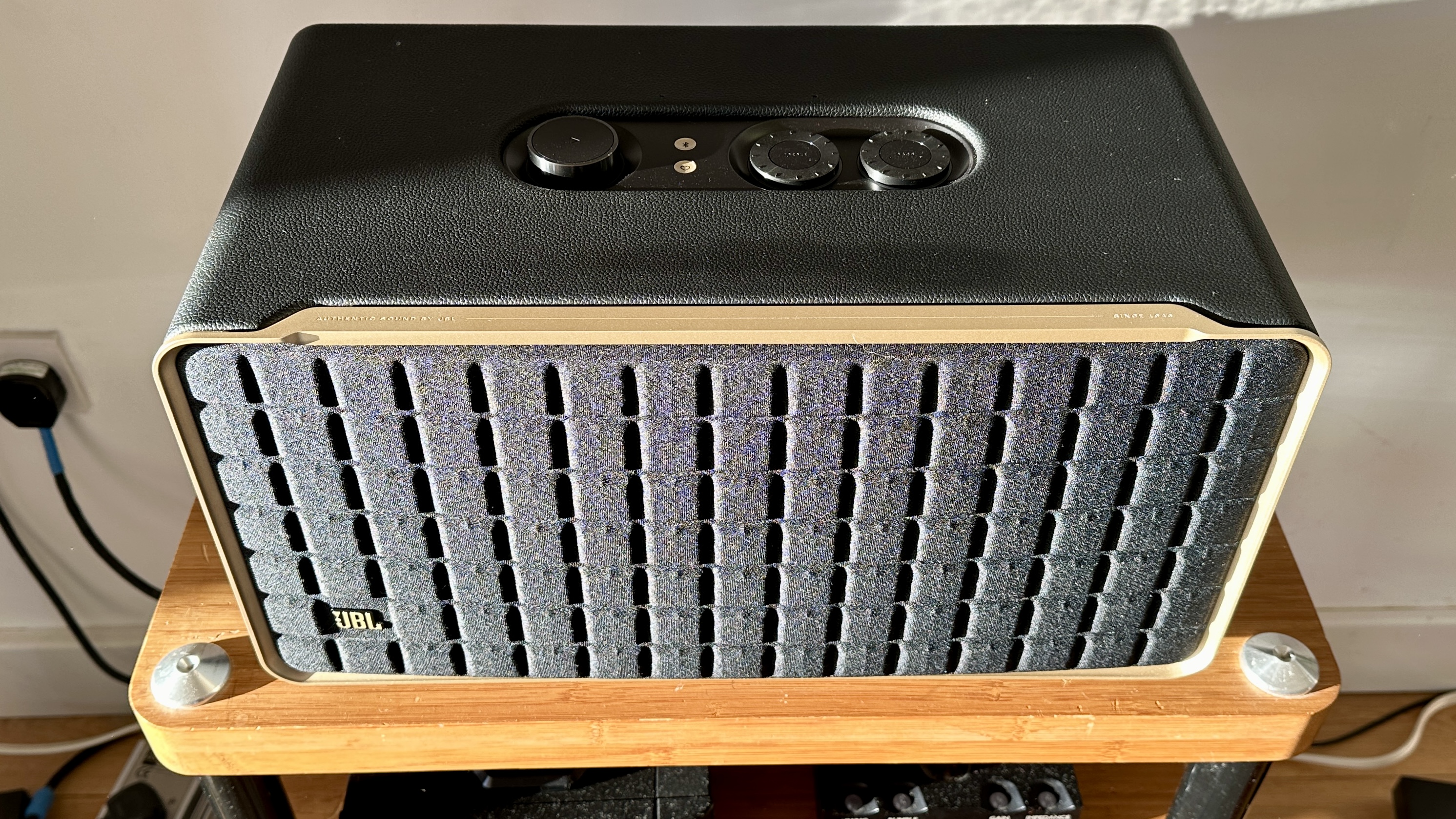
It might look like a bit of a throwback, but where it counts the JBL Authentics 500 is as 21st-century businesslike as can be.
Physical inputs are limited to an Ethernet socket and a 3.5mm analogue input. There’s a USB-C slot on the rear of the speaker too, but that’s only good for data transfer in the United States, oddly enough - in every other territory it’s for service only. Wireless connectivity, meanwhile, is handled by dual-band Wi-Fi and Bluetooth 5.3 (with SBC and AAC codec compatibility).

Once your audio information is on board, it’s pored over by a 24-bit/96kHz digital-to-analogue converter (if it’s digital in the first place, obviously). From there, it receives a total of 270 watts of amplification and is delivered to your ears via a driver array that consists of three 25mm aluminium dome tweeters, three 70mm midrange drivers and a 165mm bass driver. JBL is claiming a frequency response of 40Hz - 20kHz from this arrangement.
Get all the latest news, reviews, deals and buying guides on gorgeous tech, home and active products from the T3 experts
The tweeters are positioned toward the top of the speaker’s front panel - one fires directly ahead, while the other two are quite steeply angled left and right. All three are horn-loaded, meaning they sit behind carefully designed wave-guides - this is a big part of how JBL intends to liberate a sensation of Dolby Atmos spatial audio from a speaker with no dedicated upfiring drivers.
Three midrange drivers sit below the tweeters, angled far less aggressively. And the exposed bass driver fires downwards, meaning it’s always facing a fixed boundary for optimum response. And in case a 165mm bass driver sounds a bit tentative for your purposes, low frequencies are reinforced by a couple of gaping ‘slipstream’ bass reflex ports venting from the rear of the cabinet.
JBL Authentics 500 review: Performance
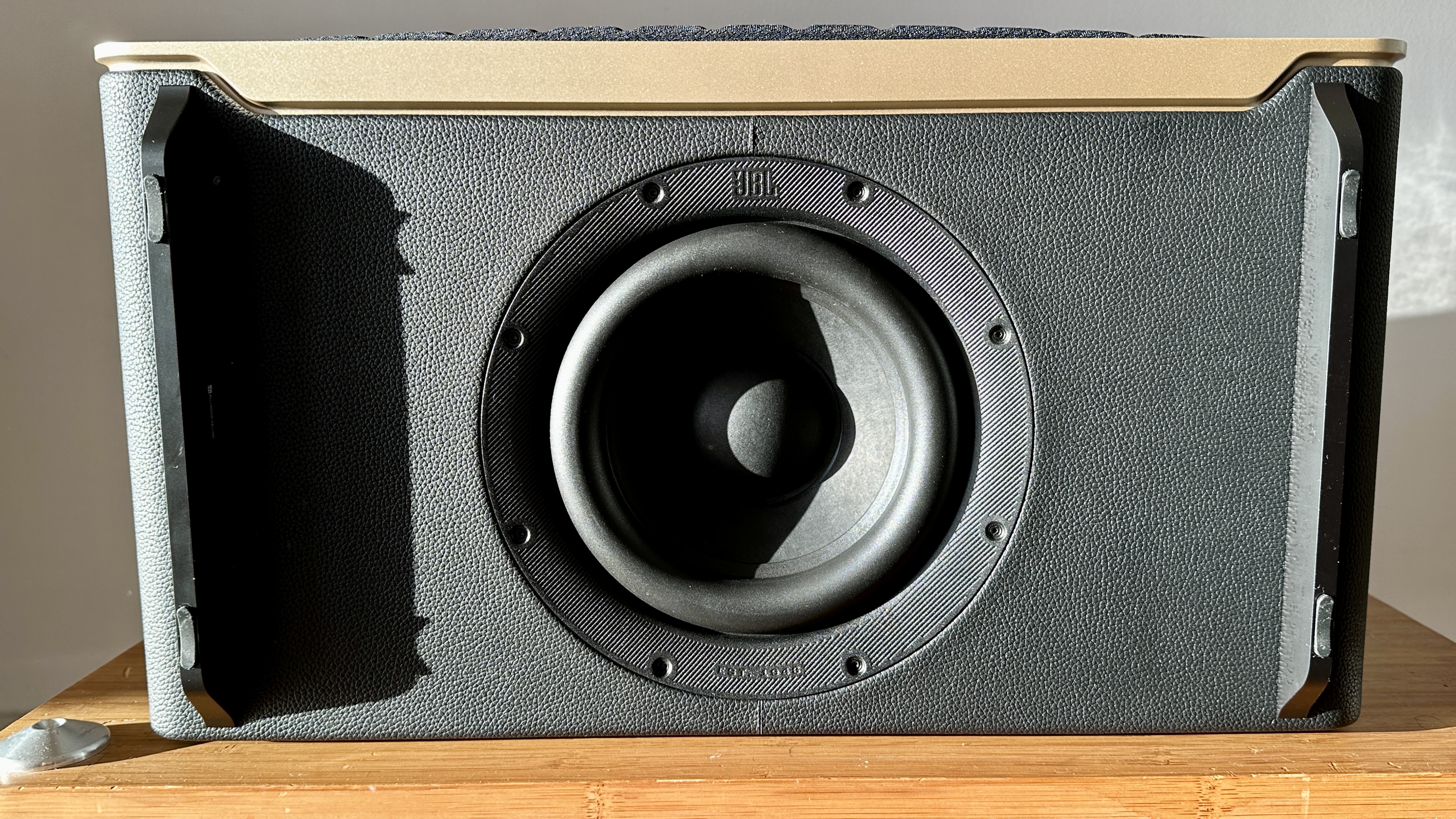
One look at the spec-sheet tells you the JBL is geared up to deal with high-resolution and Dolby Atmos content - so that seems a reasonable enough place to start. And it’s safe to say the results, while not without a few issues, are impressive - and, occasionally, oppressive.
Given that this is a JBL speaker, and given the way it’s specified, would you be surprised to learn that it puts quite a big emphasis on low-frequency activity? Because that’s most definitely that case - the bass the Authentics 500 generates is solid, properly controlled and has plenty of detail and variation within it. But my goodness there’s plenty of it.
The straight-edged control of the low-end means that the midrange and above can get on with their thing without being impacted upon by the 500’s bottom end - but even with that compliment paid, there’s no getting away from the fact that the JBL pushes the lower frequencies forwards at every opportunity, whether it’s appropriate to the content you’re listening to or not.
I should say at this point that I’m fully aware that ‘bass, and plenty of it’ is any number of listeners’ number one priority in sound reproduction. That 'bass equals excitement' is a widely acknowledged phenomenon, after all. If you want a speaker that is capable of hitting hard even when listening at very low volumes, JBL has you more than adequately covered here. Those who prefer a more even-handed or (whisper it) 'realistic presentation' may find the Authentics 500 a slightly skewed listen - but they too should read on. This speaker is no one-trick pony.
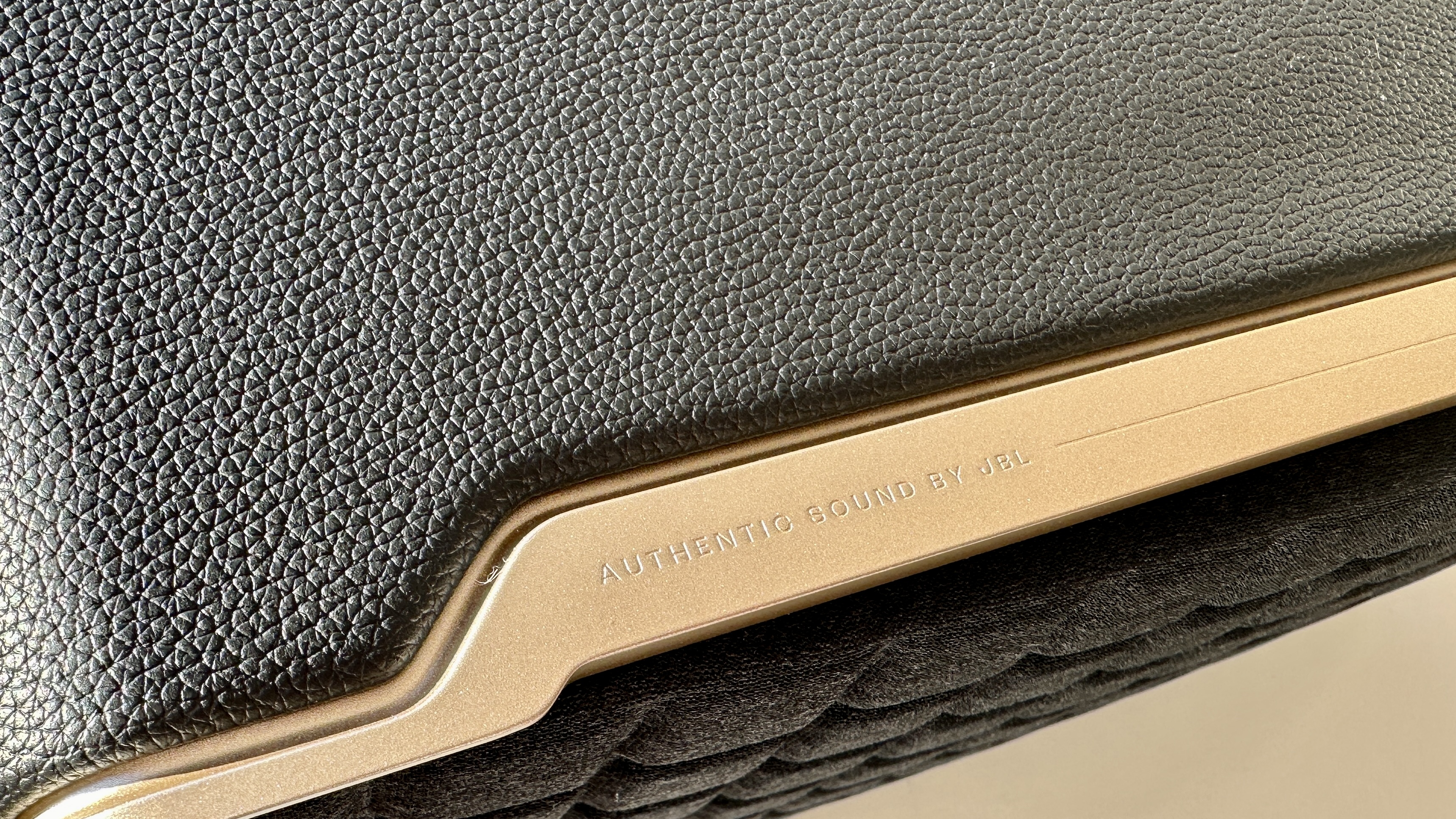
It’s a high-detail and undeniably eloquent listen through the midrange - voices of all types, singers of every level of competence and all kinds of techniques are given every opportunity to express themselves to the full. The JBL creates a large and quite well-defined soundstage, and while the bass instruments are indulged to the full, every other element of a recording gets enough space to get on with their job without having to look over their shoulder the entire time. And at the top of the frequency range there’s crisp, brisk attack - but again it’s very well controlled, and there’s more than enough substance to treble sounds to balance out their shine. And even though it’s capable of quite oppressive volume levels, the JBL doesn’t get hard or in any way shouty - it simply gets louder.
It’s worth noting, though, that should you decide to explore the upper limits of the Authentics 500’s volume, the bass becomes more dominant, more overbearing and even more pleased with itself. It’s not a recipe for disaster, you understand - but it is a recipe for too much bass, frankly.
Despite the convincing nature of its soundstage when reproducing stereo music, switching to Dolby Atmos content results in an undeniably bigger, but altogether less well-defined, presentation. Some of the certainty the JBL demonstrated as regards stage layout deserts it, and the sound is vaguer as a result. Add to this the fact that some material lends itself far more readily to the Dolby Atmos treatment than others, and the spatial audio effect is more of a part-piece than a compelling option. Especially when you bear in mind the scale of sound the Authentics 500 is capable of generating when given two-channel stuff to deal with.
The speaker’s overall tonality is on the slightly warm side of neutral - inevitable, really, when you consider the amount of low-frequency activity heating up the broad presentation. Dynamic headroom is not an issue - the JBL breathes deeply enough to put considerable distance between a recording’s quieter moments and its louder moments, and can do so with no apparent effort or any change in frequency-range emphasis. It’s pretty adept where low-level dynamic variations are concerned, too. But all of this is secondary, really - at its most fundamental, the JBL is a lively, entertaining and, above all, punchy listen. Whether or not that sounds like the sort of thing you might be into, only you can know.
JBL Authentics 500 review: Design & Usability
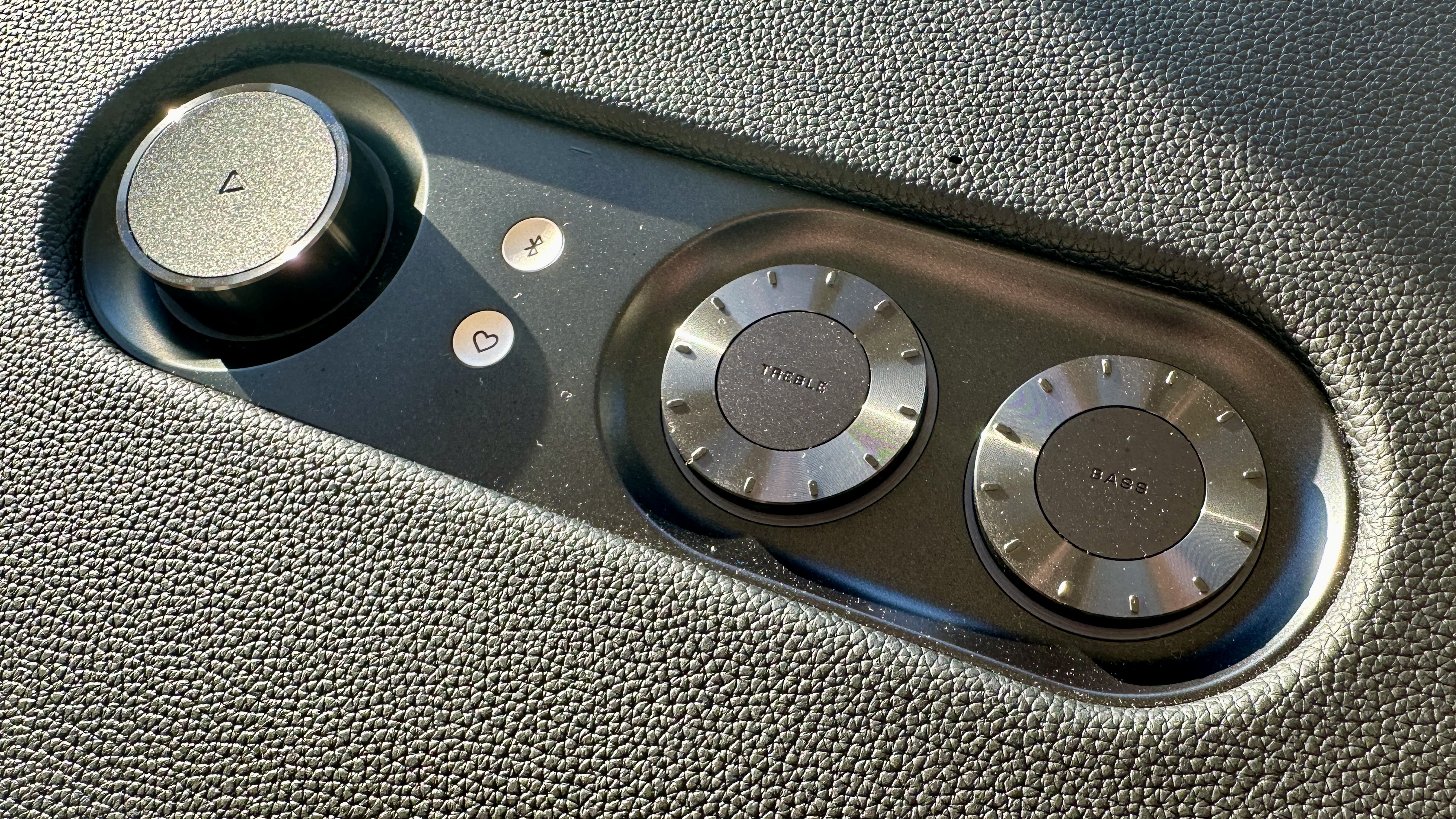
JBL isn’t the only company busily revisiting past glories when it comes to the design of its current product range - but given that its past glories were so very glorious, it seems more entitled than most. The Authentics 500, like its smaller 200 and 300 siblings, leans hard into the look of the JBL L100 Century loudspeaker - which was a product that said ‘70s’ about as loudly as John Travolta’s white suit in Saturday Night Fever. If you consider the aesthetic of five decades past to be the height of good taste, the JBL Authentics 500 will part you from your cash before you’ve even heard it do its thing.
There are some eco credentials here that the listener of the 70s could not have imagined, mind you. That speaker grille fabric is made of 100% recycled materials, for example, and the cabinet comprises 85% recycled plastics and 50% recycled aluminium. Even the Authentics 500’s packaging is FSC-certified paper with soy ink printing.
At 240 x 447 x 256mm (HxWxD) the Authentics 500 is no shrinking violet - it’s basically the width of a full-size hi-fi separates component, and will need a reasonably substantial shelf to stand on, especially when you consider it can’t be too close to a rear wall unless you want to be overwhelmed by bass reflex port activity. At least its unremarkable 7.8kg weight shouldn’t be too much of a burden.
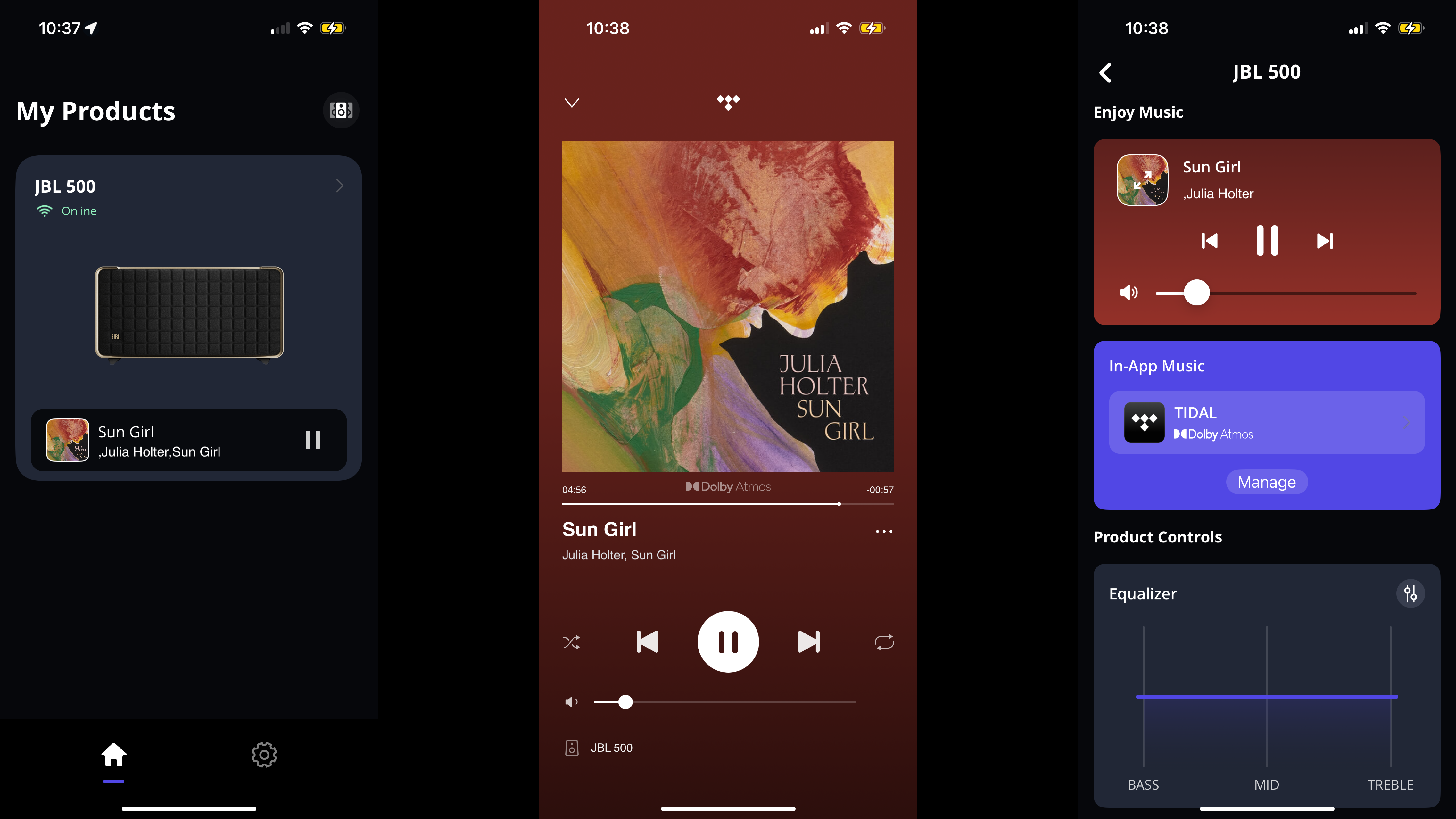
JBL has gone the extra mile when it comes to usability, too. There are a few physical controls on the top of the cabinet, naturally - these cover power on/off, volume, bass and treble, and there are ‘Bluetooth pairing’ and ‘favourite’ buttons too. There is a control app that’s free for iOS and Android, naturally - as well as playback controls, it allows you to integrate your favourite streaming services (as long as they’re Amazon Music, Calm Radio, iHeart Radio, Napster, Qobuz, Tidal or TuneIn). There’s a three-band equaliser, tutorials on how to achieve Wi-Fi streaming via Apple AirPlay and Chromecast, the ability to establish a multiroom speaker system, and access to Spotify Connect and Tidal Connect. And the JBL One app is also where you can set up your voice-assistant interaction.
The JBL Authentics range is, as far as I am aware, currently the only wireless speaker range that is compatible with both Amazon Alexa and Google Assistant voice control at the same time. Simultaneously. It’s simple to switch between the two - which means that your entire smart home can, in theory, be controlled from the Authentics 500 no matter the platform they’re allied with. Home appliances, smart TVs, Ring cameras, Nest equipment… it can all be interacted with from this speaker. The fact that the Authentics 500 responds quickly and reliably to voice commands only adds to its appeal in this regard.
JBL Authentics 500 review: Verdict

In many ways, the uncomplicated nature of the JBL Authentics 500 is properly appealing. Its ability to offer deft, detailed and quite insightful reproduction is all well and good, of course - but when it comes to low-end drive and excitement, that’s when this speaker really comes to life.
Does it offer a faithful and consistent rendition of the music you serve it? Not really, no. Is it lots of fun to listen to? You betcha. And with those big, bold looks, the JBL Authentics 500 is a powerhouse wireless speaker that’s sure to win plenty of admirers.
Also consider
The Sonos Era 300 is a wireless speaker with nothing to apologise for where sonic performance is concerned - especially when it comes to Atmos-tastic spatial audio. Apologies are required for the gawky looks, though - you may buy a speaker primarily to listen to, but JBL understands better than Sonos that you’ll be looking at it too.
Bowers & Wilkins understands this perfectly well, too - which is why the current incarnation of its Zeppelin wireless speaker manages to be easy on the eye and a visual conversation-starter at the same time. The fact that it sounds the business doesn’t do any harm, either, even if it makes no gesture at all towards spatial audio.
Simon Lucas is a freelance technology journalist and consultant, with particular emphasis on the audio/video aspects of home entertainment. Before embracing the carefree life of the freelancer, he was editor of What Hi-Fi? magazine and website – since then, he's written for titles such as Wired, Metro, the Guardian and Stuff, among many others. Should he find himself with a spare moment, Simon likes nothing more than publishing and then quickly deleting tweets about the state of the nation (in general), the state of Aston Villa (in particular) and the state of his partner's cat.
